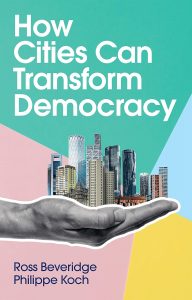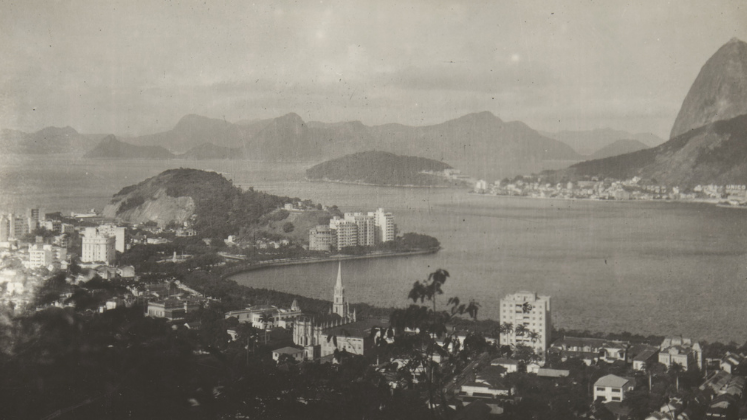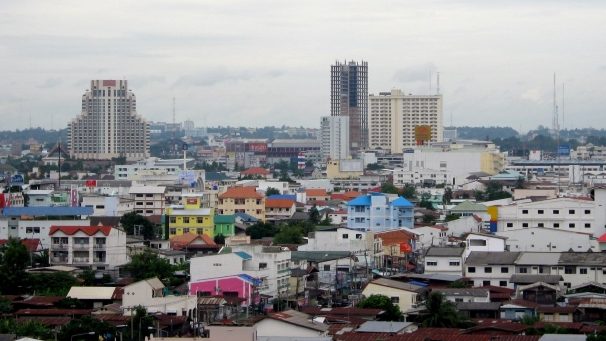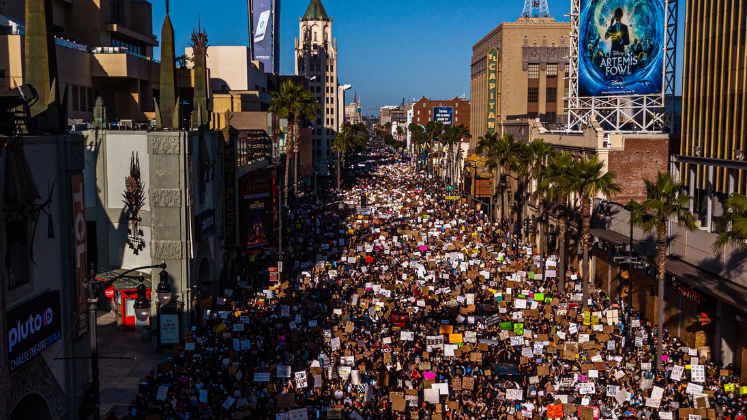In How Cities Can Transform Democracy, Ross Beveridge and Philippe Koch position the city as a democratic idea and a space for everyday collective action in the context of increasing urbanisation. Taking a multidisciplinary approach to explore how political agency manifests in urban settings, this book generates new ways of thinking about the democratic potential of the city, writes Charlotte Cator.
How Cities Can Transform Democracy. Ross Beveridge and Philippe Koch. Polity Press, 2022.

How are we to “take control of the places we live in, to act collectively on the processes which shape our daily lives” in a time where global forces of urbanisation have fundamentally challenged spatial and political categories (148)? That is the question Beveridge and Koch aim to answer in this generative, hopeful and well-written book. Their investigation of the political meaning of the city under global urbanisation could not have be more timely in light of ongoing global housing struggles and a widespread surge in the cost of living.
Through an engagement with urban studies literature, radical democracy theory and post-colonial theory, the authors conceptualise the distinctly urban form of democracy that is enacted around the world every day.
Through an engagement with urban studies literature, radical democracy theory and post-colonial theory, the authors conceptualise the distinctly urban form of democracy that is enacted around the world every day. They develop an understanding of the city (chapter 2) that moves away from conventional ideas of the city as a category of geographical analysis or a distinct physical form towards the city “as a foundation for political imagination and action” (46).
To reimagine democracy and the city (chapter 3), Beveridge and Koch bring radical-democratic theory, and especially Sheldon Wolin’s political thought, in conversation with Engin Isin’s idea of the city as both an actual place that provides the ground for democratic practices and a virtual place – a democratic imaginary and project of collective concern that is evoked through practices. This way, we can understand the city as the key space for democratic publics to come into being.
The book presents and connects a variety of urban movements, such as spontaneously arising protests, urban cooperatives and various municipalist initiatives, demonstrating key characteristics of urban democracy.
To show how these publics arise across the globe, the book presents and connects a variety of urban movements, such as spontaneously arising protests, urban cooperatives and various municipalist initiatives, demonstrating key characteristics of urban democracy. Key here is that urban democracy promotes a non-sovereign politics of self-government and collective self-rule. This politics is spatial and situated in the urban everyday – it is a process of recurring attempts and aspirations that are never fully realised and always contingent (chapter 4). In this process, democratic subjects are shaped through their engagement in urban publics. Citizenship thereby becomes something which is insurgent, practice-based and situated in space (chapter 5).
Crucial for urban democracy is the complex but inevitable relation with the state (chapter 6). The book argues that the project of the city requires “a conceptual and normative disentangling of, first, politics and, then, democracy from the state” (127). Importantly, however, the state cannot be avoided. Drawing on Margaret Kohn’s democracy/state nexus, the authors argue that although the democratic and emancipatory potential of urban movements lies outside of the state, the state is one of the most potent forces in (re)structuring urban space and (re)distributing resources and can therefore not be ignored altogether – “there can be no democracy outside of the state” (128). Rather than a monolithic entity, this makes the state a key site of struggle and opportunity that urban politics must contend with.
Beveridge and Koch conceptualise the relation between urban politics and the state through an elaboration of Simon Critchley’s concept of “interstitial distance” (69). Through such a distance, the unresolvable tensions between state and democracy can be embraced, and the state de-centred, reducing it “to an enabler or partner at the side of the demos” (125). A “future urban state” can thus take shape, which would be an enmeshment of cooperative and collective initiative driven by urbanites alongside the state that enables a “localized urbanization” (134).
The book takes seriously the myriad of urban activists around the globe who work hard and continuously to democratise the city.
This book is a very welcome intervention into, and contribution to, attempts to move “politics closer to people’s everyday lives” (162) and to “democratize democracy” (52). It takes seriously the myriad of urban activists around the globe who work hard and continuously to democratise the city. It pushes back against potentially totalising accounts of socio-spatial processes of urbanisation and resituates political agency in the city, by drawing attention to the spontaneous and everyday interactions that are so crucial for ongoing struggles for democratisation.
However, although the book acknowledges the contention put forward in planetary urbanisation literature that processes of urbanisation are variegated and uneven, it runs the risk of not sufficiently thinking through the implications of this for urban publics. The main tenet of planetary urbanisation is to bring into view the relations between the city and the geographies beyond it through infrastructures for logistics and communications and extended supply chains for inputs and waste streams. These relations have far-reaching consequences for urban democratic publics.
The power of capital impacts not only the conditions for urban publics to arise locally but ultimately mediates the relation between different urban publics across the globe.
By developing an account of urban democracy based on “bodies in space, coming together” (101), the authors risk overlooking how bodies in space are inherently related to bodies in distant spaces through political-economic processes of urbanisation that span the globe. The power of capital impacts not only the conditions for urban publics to arise locally but ultimately mediates the relation between different urban publics across the globe. Likewise, embracing the thought that “we are all urbanites now” (156) might insufficiently take seriously the divergences that are by now widespread, and most extreme between urbanites in “hipster” cities on the one hand, and people in deindustrialised and “left-behind” places on the other. The question of how we can relate an urban public in one place to the struggle of peasants over commons in another calls for closer empirical engagement with such publics around the globe, and especially in the Global South.
Such empirical engagement could also add to a better understanding of the internal dynamics of urban publics over time, which is another aspect that the book covers insufficiently. The spontaneous arising of a public to reclaim urban space on the last Friday of every month (as with the Critical Mass biking protests) or in response to impeding eviction of two fellow urbanites (as with the example of Glasgow) is one thing, but a community land trust that enables alternative forms of urban living through continued and constructive engagement a whole other.
Although the authors do acknowledge this throughout the book, a next step is to think through more explicitly the different moments of urban publics, of contestation and generation. If we are to understand how urban democracy, with its “fugitive” character (55), might pose a serious challenge to global capital and planetary urbanisation, we need to further empirical engagement to gain a better understanding of these different moments and the mechanisms around power and equality inherent in them.
The fruitful combination of urban studies literature, radical democracy theory, post-colonial theory and a wide array of examples make for an engaging read.
It is these important questions around the harnessing of the democratic potential of the city that this book opens up for. The fruitful combination of urban studies literature, radical democracy theory, post-colonial theory and a wide array of examples make for an engaging read. Activists, policy makers and academics alike may all draw on this book to enact and promote urban democracy, and to further understand how it can be sustained as a force in spite of global urbanisation.
Note: This review gives the views of the author, and not the position of the LSE Review of Books blog, or of the London School of Economics and Political Science. The LSE RB blog may receive a small commission if you choose to make a purchase through the above Amazon affiliate link. This is entirely independent of the coverage of the book on LSE Review of Books.
Image Credit: Kumasi, Ghana by Anton_Ivanov on Shutterstock.







